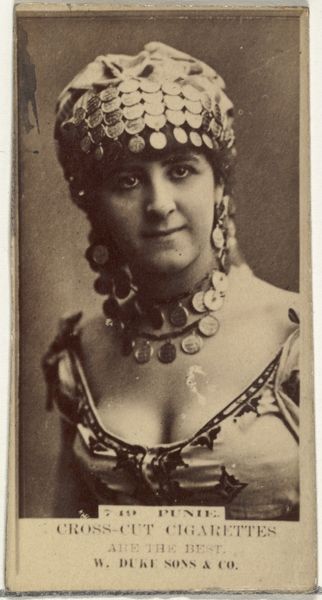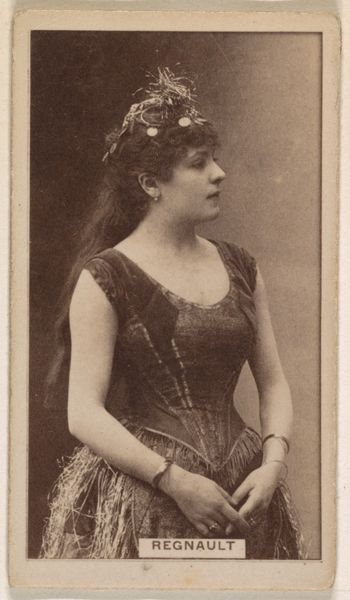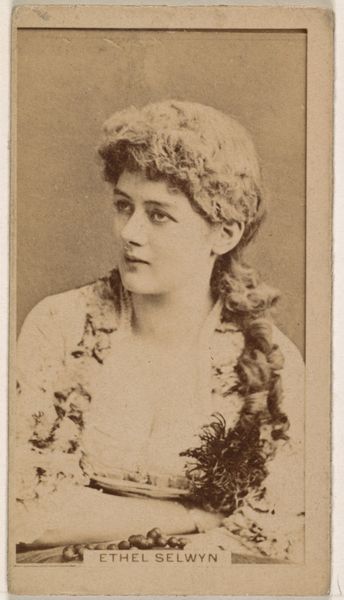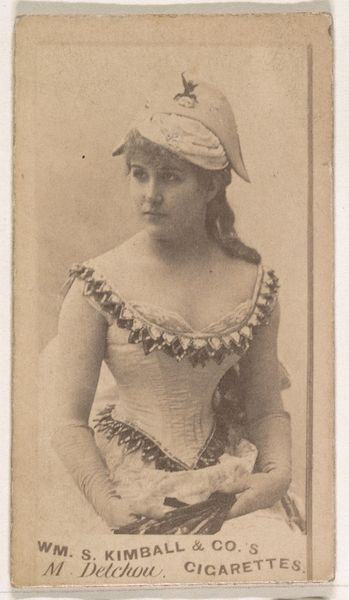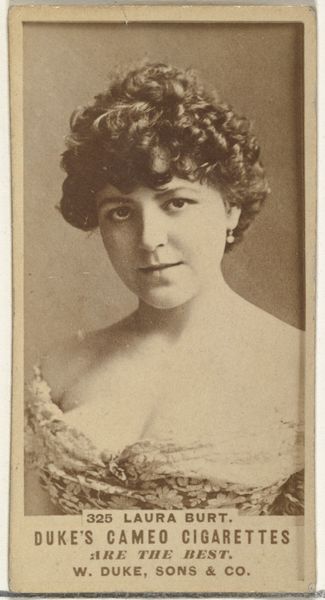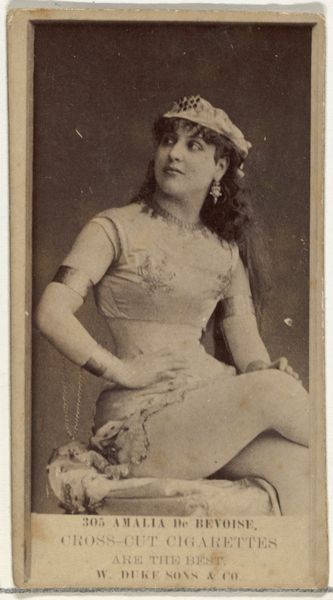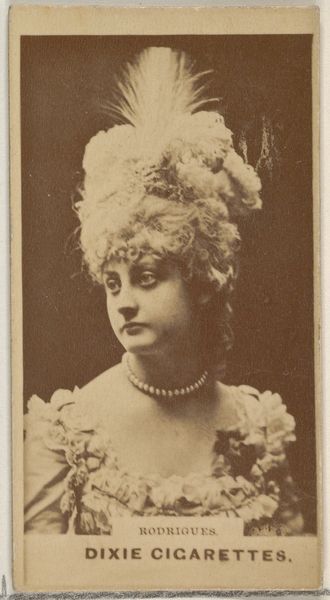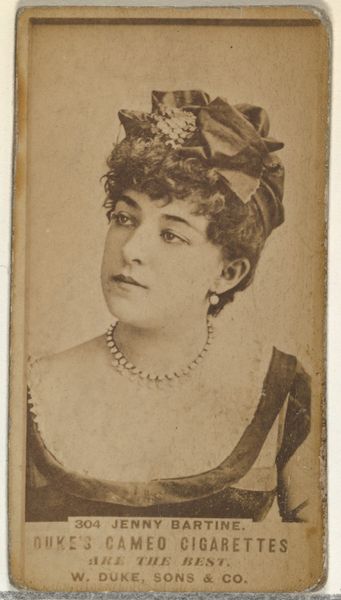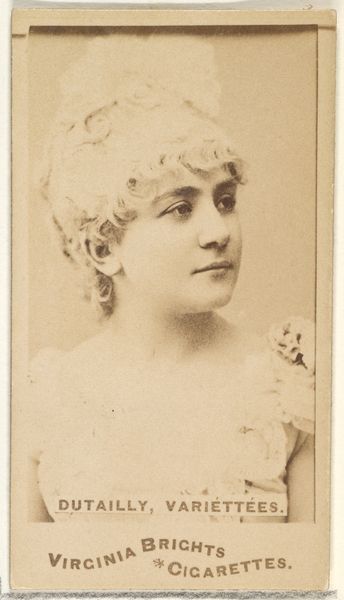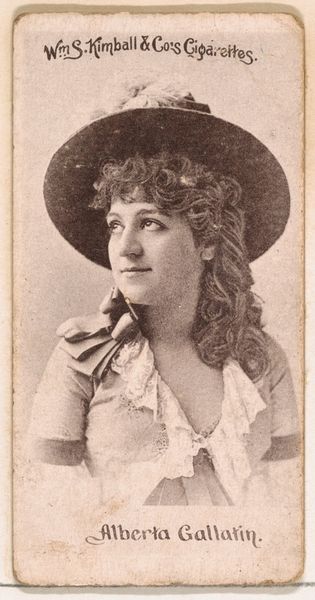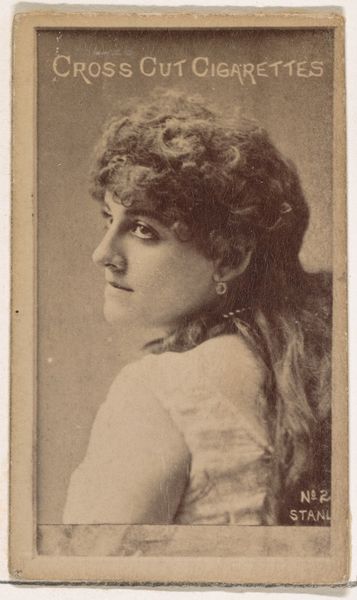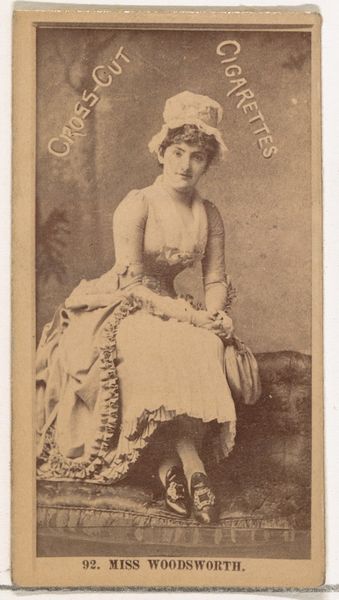
May Danforth, Corsair Co., from the Actors and Actresses series (N45, Type 6) for Virginia Brights Cigarettes 1885 - 1891
0:00
0:00
print, photography, albumen-print
#
portrait
# print
#
impressionism
#
archive photography
#
photography
#
historical photography
#
19th century
#
albumen-print
Dimensions: Sheet: 2 15/16 x 1 11/16 in. (7.4 x 4.3 cm)
Copyright: Public Domain
Editor: So this is "May Danforth, Corsair Co." It's from the Actors and Actresses series for Virginia Brights Cigarettes, dating from between 1885 and 1891, by Allen & Ginter. It's an albumen print, and seeing it now, I'm struck by how commercial it feels. The soft, almost romantic portrait aesthetic seems juxtaposed with the blunt advertisement. What do you make of this? Curator: What's interesting here is not just the image itself, but the means of its production and its intended consumption. This isn't high art; it's a mass-produced commodity. Think about the albumen process—how many prints could be made from a single negative? And how many were distributed within cigarette packs? Editor: So, it's about accessibility and ubiquity? Curator: Exactly. The image of May Danforth, a performer, gains value not just as a representation but as a collectible object. The cigarette company is leveraging her fame, but also turning her image into a widely available item. It makes me think about labor too; consider the labor to produce the albumen paper, make the photographs, and print these for the masses. And the exploitation that labor might suggest. Editor: It sounds like you're suggesting the photograph's beauty is almost secondary to its role within this larger system of production and consumption. Almost like the artist is a cog in a factory? Curator: Precisely! We should look at the portrait's inherent qualities, yes, but we must also recognize its existence as a manufactured article embedded in complex networks of economic exchange. Editor: That gives me a totally different lens through which to view it. Instead of thinking about artistry, thinking about it as almost an industrial process using images and popularity to push product. I didn't consider the impact of this piece beyond just an appealing advertisement, but really a means of using human and natural resources. Thank you. Curator: Of course. Now, consider other artists in the period who rejected this method entirely. Think of William Morris’ emphasis on hand-crafted quality goods and how starkly this item of mass production is against it!
Comments
No comments
Be the first to comment and join the conversation on the ultimate creative platform.
